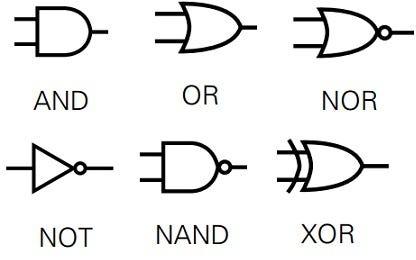Understanding Logic Gates: The Building Blocks of Digital Circuits
Introduction
Logic gates are fundamental components of digital circuits that form the backbone of modern technology. These gates process binary signals (0s and 1s) and perform logical operations, making them essential for computing, communication, and various electronic devices. In this article, we will delve into the world of logic gates, exploring their types, functions, and applications.
1. What are Logic Gates?
At their core, logic gates are simple electronic devices that take one or more binary inputs and produce a binary output based on specific logical operations. These operations follow the principles of Boolean algebra, where true is represented as 1 and false as 0. The basic operations performed by logic gates include AND, OR, NOT, NAND, NOR, and XOR.
2. Types of Logic Gates
a) AND Gate: The AND gate outputs 1 only when all of its inputs are 1. It behaves like the logical “AND” operator in Boolean algebra.
b) OR Gate: The OR gate produces an output of 1 if any of its inputs is 1. It behaves like the logical “OR” operator.
c) NOT Gate: The NOT gate, also known as an inverter, complements the input. If the input is 0, it produces 1, and if the input is 1, it produces 0.
d) NAND Gate: The NAND gate is a combination of an AND gate followed by a NOT gate. It produces the opposite output of the AND gate.
e) NOR Gate: The NOR gate is similar to the NAND gate but behaves like an OR gate followed by a NOT gate.
f) XOR Gate: The XOR (Exclusive OR) gate produces an output of 1 if its inputs are different; otherwise, it outputs 0.

3. Truth Tables and Logic Gate Combinations
To understand the behavior of each logic gate, we use truth tables that map all possible input combinations to their corresponding outputs. By combining these basic gates, we can design complex circuits to perform various computations.

4. Logic Gate Applications
Logic gates serve as the foundation for digital electronics and are the building blocks for numerous applications, including:
a) Arithmetic Operations: They are used to perform addition, subtraction, multiplication, and division in microprocessors and calculators.
b) Memory Units: Logic gates form the basis of memory units like flip-flops and registers, enabling data storage in digital systems.
c) Communication Systems: In communication networks, logic gates help transmit and receive signals, encoding and decoding data.
d) Programmable Logic Controllers (PLCs): PLCs rely on logic gates to automate industrial processes and control machinery.
e) Digital Displays: They control the segments in LED and LCD displays to showcase characters and numbers.
5. Digital Circuit Design
Understanding logic gates is essential for digital circuit design. By combining these gates creatively, engineers can build complex processors, microcontrollers, and digital systems that power modern technology.
Conclusion
Logic gates are the fundamental building blocks of digital electronics, enabling the manipulation and processing of binary data in various applications. Their simple yet powerful operations form the basis of digital circuit design, making them a crucial topic for anyone interested in understanding the world of electronics and computing. Whether you are a beginner or an experienced engineer, grasping the concept of logic gates is essential for unlocking the potential of modern technology.
Comments
Post a Comment